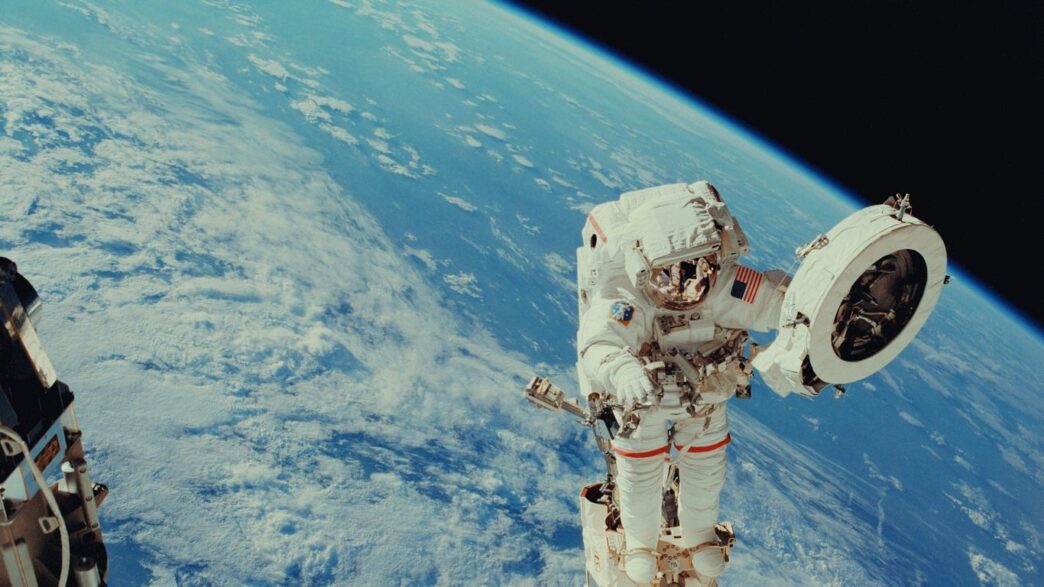Space news in 2025 is just wild. Every week, it feels like something new is happening—Mars rovers sending back weird photos, black holes doing things no one expected, and the Moon suddenly full of surprises. Even the Sun is acting up, throwing out storms that mess with our satellites. With new missions blasting off and discoveries rolling in, it’s honestly hard to keep up. Here’s a quick roundup of the biggest stories that are changing how we see our universe right now.
Key Takeaways
- Mars keeps surprising everyone—Perseverance rover found possible signs of ancient life and odd rock patterns that have scientists talking.
- The Moon’s South Pole is about to get busy, with VIPER and Artemis missions aiming to find ice and new clues about our closest neighbor.
- Astronomers are catching new types of cosmic explosions, tracking black holes that shoot energy across galaxies, and spotting supernovas with double bursts.
- Planets are being caught in the act of forming, and some giant worlds are showing up in places they just shouldn’t exist by current theories.
- Solar storms are getting stronger, and new spacecraft are mapping the Sun’s wild magnetic fields, which could mean more surprises for Earth.
Mars Exploration Delivers Breakthroughs in the Search for Life
Mars has taken the spotlight again in 2025, and it’s not just about the cool tech rolling over the red dirt. The big deal? NASA’s Perseverance rover has stumbled onto new evidence that Mars could have once supported living things. This touches everything from ancient water on the planet to weird rock patterns that have scientists scratching their heads. Let’s break down what’s got people talking this year.
Perseverance Rover Finds Potential Biosignatures in Jezero Crater
You know that feeling when you turn over a rock in your backyard and find, like, five new bugs? Perseverance did that, but 54 million miles away, sampling rocks in the ancient Jezero Crater. The rover grabbed a chunk from a spot called “Cheyava Falls” and—after a lot of testing—found traces that might actually be signs of ancient Martian microbes. These molecules and minerals look a lot like the leftovers from metabolism here on Earth, but folks are quick to say it’s still just a clue, not proof. Still, the excitement is real. For more on what’s fueling current tech buzz, see the announcement of the new iPager.
Strange ‘Leopard Spots’ Could Be Strongest Evidence Yet
This summer, scientists highlighted a rock called "Sapphire Canyon" because of its bizarre, spotty patterns. Nicknamed “leopard spots,” these marks might be ancient colonies of tiny lifeforms or the leftovers of odd chemical reactions. Either way, no one has really seen this kind of pattern on Mars before, so people are racing to figure out what it means. Here’s what makes them stand out:
- The spots are rich in organic molecules.
- Their layout matches some forms of microbial growth on Earth.
- They sit in a layer of rock known to have once been wet.
How Ancient Water and Martian Chemistry Shaped Habitability
Mars wasn’t always a dry, frozen place. New results from Perseverance point to three stages of water in Jezero Crater, shifting from nasty, acidic stuff to more mellow, alkaline water. This is pretty big, since life likes things less harsh. The rover’s gear is also mapping out where minerals, salts, and clays overlap with organics—basically, a checklist for places that could have once been livable.
Here’s a peek at the changes:
| Stage | Water Type | Key Minerals | Habitability |
|---|---|---|---|
| Earliest | Acidic | Sulfates, Iron | Low |
| Transition | Neutralizing | Clays, Carbonates | Medium |
| Final | Alkaline | Calcium Salts | Higher |
Cutting-Edge Organic Carbon Discoveries in Mudstones
Fresh out of the latest sample tubes: Perseverance dug into Martian mudstones and found a sweet spot for ancient organic carbon. These rocks lock away tiny carbon compounds, some of which look like leftovers from life or the kind that provide building blocks for future life. Scientists are now debating whether water, heat, or time did most of the cooking.
Key things they’re looking at:
- Which processes (water vs. volcanic heat) created these carbon-rich layers?
- If similar patterns show up in other Mars missions.
- How much of this organic stuff ended up preserved, and whether it really hints at biology.
So, all eyes are on Mars right now. With every new core Perseverance drills, the question builds: Are we the first life to have poked around these rocks—or just the latest?
Revolutionary Missions Expand Our Solar System Knowledge

Big headlines might go to Mars, but there’s a lot more happening out there. In 2025, there are quite a few robotic explorers and human crews making waves across the solar system. These missions don’t just grab cool photos—they change the way we understand our solar neighborhood, from the Moon’s shadowy craters to the Sun’s wildest tantrums.
VIPER Rover Prepares for Moon’s South Pole
NASA’s VIPER rover is getting close—literally—to the coldest, darkest corners of the Moon. The plan? To map water ice, which is a kind of holy grail for anyone hoping to build a long-term home off Earth. The South Pole is tough terrain, full of craters that never see sunlight. Here’s what VIPER is set to do:
- Crawl around the Moon’s South Pole and drill deep for ice samples
- Measure how much water is trapped below the surface
- Help plan future lunar bases, since astronauts will need local water
This isn’t a speedy mission. Any glitch could leave VIPER stuck, so every wheel and drill is a test of engineering.
Artemis Crew and Next-Gen Astronauts Take Center Stage
We’re seeing a new wave of people heading toward the lunar surface. The Artemis missions are back in full swing, with more diversity among astronauts than ever before. What’s their focus in 2025? Not just walking—it’s about living and working:
- Building the first long-term moon base
- Experimenting with ways to survive longer missions, like growing food and using local resources
- Testing tech for Mars, because our next giant leap won’t stop at the Moon
Biggest difference from Apollo? These crews are staying put for weeks, not hours, and they’re trying to solve problems for good.
NASA and NOAA Launch Fleet to Map Solar Activity
Earth keeps an eye on the Sun for good reason. In 2025, a fresh crew of satellites is keeping tabs on everything from solar flares to mysterious plasma flows. This is about more than curiosity—solar outbursts can mess with planes, power grids, and even your phone:
| Agency | Mission Name | Launch Date | Purpose |
|---|---|---|---|
| NASA | HelioView | April 2025 | Real-time solar flare tracking |
| NOAA | SolarWatch-II | June 2025 | Predict geomagnetic storms |
| ESA | SolSentinel | July 2025 | Study particle emissions |
- These are the most advanced weather satellites ever aimed at the Sun.
- Real-time warnings can give us minutes, not seconds, to protect infrastructure.
- Data is used for everything from GPS to keeping astronauts safe.
Tiny Spacecraft Set to Chase Black Holes and Test Physics
Something wild is happening this year: a group of tiny probes the size of toasters will head to the outer solar system. Instead of just watching planets, they’ll chase high-energy events, like black holes swallowing stars. Why send small probes?
- Cheaper to launch, so we can send dozens for the price of one big machine
- They carry new sensors never used outside Earth’s orbit
- Swarm tactics: by working together, they can spot stuff one lone satellite would miss
If one satellite fails, the mission keeps going. Plus, the data could break some old ideas about how gravity and energy flow far from the Sun.
Honestly, it feels like we’re living in the golden age of small, smart, and tough space explorers. These efforts are setting the stage for giant leaps in the next few years—not to mention surprises we don’t even have names for yet.
Black Holes, Exploding Stars, and Cosmic Collisions Shape Space News
This summer, space scientists and backyard astronomers alike have had plenty to talk about, thanks to waves of announcements about wild cosmic happenings. Black holes are behaving in ways no one expected, stars are blowing up in the far-off galaxies, and all kinds of collisions are stirring things up across the universe. Let’s jump into this year’s headline moments.
Record-Shattering Gravitational Wave Discoveries
Detectors captured the strongest gravitational wave ever observed back in July, and since then more have rolled in. Each ripples through space, coming from huge cosmic smashups far beyond the Milky Way.
Quick facts about recent gravitational wave detections:
| Date | Event Distance (light-years) | Estimated Source | Signal Strength (GW strain) |
|---|---|---|---|
| 7/16/2025 | 1.3 billion | Black Hole Merger | 6.5 x 10⁻²¹ |
| 8/27/2025 | 650 million | Neutron Star Crash | 3.2 x 10⁻²¹ |
| 9/04/2025 | 2.2 billion | Black Hole Pair | 4.8 x 10⁻²¹ |
Scientists say we’re detecting cosmic collisions several times a month now, compared to maybe once every few months just two years ago. More data helps refine models of how the universe grows and changes.
Rogue Black Holes Beam Energy Across Galaxies
Astronomers tracked several ‘rogue’ black holes this year—objects not stuck at a galaxy’s center, but roaming free and shooting bright outbursts of energy. Here’s what’s especially weird:
- One wandering black hole was seen shooting powerful jets far outside its home galaxy.
- These objects might account for some mysterious bursts of radio or X-ray energy we’ve seen for years.
- Some theorists suggest rogue black holes could kick off star formation if they pass through dense clouds of gas.
Violent Star Collisions Distribute Gold and Heavy Elements
You might be wearing stardust—literally. Colliding stars blast out heavy elements like gold and platinum, flinging them across space. Scientists have measured those explosions with new telescopes and found:
- Nearly all heavy elements we mine on Earth began as debris from ancient stellar crashes.
- These cosmic collisions are common in some parts of the universe and rare in others.
- They release bursts of light, gamma rays, and gravitational waves, often all at once.
A Rare Supernova’s Double Explosion Captured for the First Time
For the first time, astronomers snagged a full video sequence showing a star erupting twice—a double explosion, not just one burst. That’s not supposed to happen, but there it is: one initial bright blow, a pause, then a hotter and brighter second flash. The top takeaways:
- This could change what we know about how big, old stars die.
- The "double bang" might help explain odd leftovers seen in space clouds.
- Researchers are already hunting for other stars that pulled the same trick.
All in all, 2025 has been anything but dull for cosmic fireworks. If this keeps up, the next big surprise might come any night, and everyone’s watching.
Exoplanet Discoveries That Rewrite the Rules of Planet Formation
2025 keeps throwing curveballs at astronomers, and the exoplanet front is wild. With over 6,000 confirmed worlds already cataloged (NASA has confirmed a total of 6,000 exoplanets), the rate of bizarre discoveries seems to get faster every year. Let’s get into the most jaw-dropping updates.
Planetary Birth Photographed in Progress
Just this summer, astronomers finally managed to snap a photo of a planet forming around a young star 1,300 light-years away.
Capturing a planet in the act of being born is something folks used to consider impossible. But here’s the kicker: they caught a newborn gas giant, WISPIT 2b, glowing and pulling in gas, smack in the middle of a dusty, multi-ringed disk.
The process isn’t just pretty pictures—these images are changing how scientists see planet growth. The dust and gas environment looks messier than models predicted. There’s talk of more planets hiding out in similar chaotic nurseries, waiting to be found.
Giant Worlds Found Where None Should Exist
The theory goes: hot, giant planets aren’t supposed to last long if they orbit close to their stars. Yet this year, astronomers stumbled on a whopper—ten times the mass of Jupiter—hugging its host star way closer than textbooks say is possible.
Here are a few reasons that challenge what we thought we knew:
- Gas giants should evaporate quickly this close.
- Some planets’ gravity seems to resist being ripped apart.
- Their orbits are oddly stable despite predicted chaos.
So, either the rules need changing, or the math misses something big.
Steam and Ultra-Hot Planets Challenge Habitability Models
"Steam worlds" are a new puzzle for planet-hunters. Sub-Neptune planets, rich in water, have been found orbiting so close to their stars that their surfaces are shrouded in endless clouds of vapor. Some are so hot that scientists question if traditional ideas of habitability still make any sense.
Let’s stack the oddities:
- Thick water atmospheres make surface life unlikely.
- Models suggest water should boil away—yet the planets hold on to it.
- Even at 1,000°F, some show hints of complex chemistry.
All this means some previously excluded planets could actually be interesting places for life, at least in ways we haven’t considered.
Strange Spotted Worlds and Building Blocks of Life
Every month, there’s news about planets with spotted surfaces—patchy clouds, chemistry signatures, or temperature bands that defy explanation. In August, astronomers detected molecules, like simple sugars and organic acids, near a young planet’s forming disk. These building blocks of life aren’t supposed to show up in such hostile places, apparently.
A quick comparison of recent finds:
| Discovery Type | Why It’s Odd | Potential Impact |
|---|---|---|
| Giant close-in planets | Shouldn’t survive by theory | Revamp models of planet growth |
| Steam worlds | Water persists at extreme heat | Rethink planetary atmospheres |
| Life’s building blocks | Found where not expected | Expands possible life habitats |
Finding so many exceptions is almost routine now. With technology and surveys ramping up, the next year may shake up everything, yet again. If you thought our solar system was the blueprint for others, 2025 has proved it’s more like just one oddball example in a very strange universe.
Unveiling the Dynamic Sun and Its Surprising Influence

Our sun, the ordinary-looking star at the heart of the solar system, seems to throw curveballs more often than not. And in 2025, things have gotten a lot more interesting. Scientists are watching as the sun gets rowdier, new missions peek behind its surface, and everyday life on Earth feels more connected than ever to the moods of our giant star.
Monster Solar Storms and Rare G4 Events Threaten Earth
This year, the sun decided to remind us who’s boss. Earth has already been hit by several intense solar storms, with at least two reaching the strong G4 category. When that happens, power grids and satellites feel the impact, and radio communications go haywire. Some key things we’ve learned:
- G4 (severe) storms are much less common than lower grades, but 2025 has already seen two, up from zero in the past three years.
- Auroras have dipped as far south as Texas and Italy—people were pretty amazed to see green skies that far from the poles.
- Some airlines even had to reroute flights over polar regions due to radiation risks.
| Storm Grade | Number Reported (2022–2025) |
|---|---|
| G1–G2 | 35 |
| G3 | 7 |
| G4 | 2 |
| G5 | 0 |
A big factor behind all this extra activity? According to a recent NASA research update, the sun’s behavior follows an 11-year cycle—and we’re now nearing the peak. Scientists tracking these patterns say more surprises could be in store.
Solar Orbiter Exposes Dual Particle Engines
The Solar Orbiter mission, still hurtling around the sun, has been the talk of the community. This spacecraft managed to snap the first-ever images showing two separate ‘engines’ hurling particles out from deep within the sun. Each of these engines shoots different types of solar wind that eventually blast out into our solar system. It’s a bit like discovering the sun’s got two entirely different ways to keep space weather busy.
Here’s what sticks out from the data:
- Fast solar wind appears to shoot out from holes in the sun’s poles.
- Slow wind erupts near the solar equator, often tied to swirling magnetic storms.
- Tracking these particle jets may help warn us several days ahead of future storms—handy for keeping satellites safe.
Spectacular New Images Reveal Magnetic Mayhem at Sun’s Poles
In June, scientists unveiled the sharpest pictures ever of the sun’s poles. You could almost see loops and arcs of magnetism like they’d just done their hair all wild. These poles have always been tricky to observe, but new adaptive optics let researchers peer through all the haze. The result? Magnetic fields crisscrossing, twisting, sometimes clashing—you might call it organized chaos.
- Sunspot activity at the poles is much higher than expected.
- Magnetic field strength recorded is up to 20% greater at the poles than previous estimates.
- The findings suggest some solar storms start at the poles and then race toward the sun’s middle—something scientists are keen to watch in the years ahead.
We may take the sun for granted, but in 2025, it feels more like we’re just beginning to get to know our star’s wild side.
Moon Mysteries: From Explosive Past to Alien Ice
If you’ve ever looked up at the Moon on a clear night and wondered what secrets it’s hiding, you’re not alone. There’s been a flurry of fresh discoveries in 2025 that are making even veteran scientists double-check what they thought they knew about our nearest neighbor.
Chang’e-6 and Artemis Missions Reveal Lunar Secrets
The last few months, the Chang’e-6 probe landed on the Moon’s far side, scooping up samples from areas no one has ever explored. Guess what turned up? Signs that ancient volcanoes were much more active than anyone imagined. Meanwhile, NASA’s Artemis teams are rolling out new lunar vehicles to help the next round of astronauts dig for ice and probe deep structures beneath the surface.
- Chang’e-6 found volcanic rocks that point to eruptions as recently as a billion years ago.
- Artemis rovers are mapping ice deposits at the south pole, raising hopes for a long-term lunar base.
- Both missions have sent back stacks of data on lunar soil chemistry, which is already rewriting textbooks.
You can follow how humans and robots are transforming exploration missions across the universe with technology that just a decade ago seemed impossible.
Hidden Origins of the Moon’s Magnetism Decoded
There’s this lingering puzzle: Why do some lunar rocks set off a compass, and others don’t? Well, work by MIT and others finally pieced together some answers. Turns out, the Moon may have once had a magnetic field strong enough to rival Earth’s. The trick is, most of that field faded billions of years ago, but some rocks kept the ghostly trace locked inside.
Here’s the weird part:
- Ancient lava flows on the near side of the Moon are often highly magnetic, stumping geologists for years.
- New laboratory studies show these rocks formed during brief periods when the Moon’s liquid core generated a dynamo.
- The oldest magnetized rocks date back 4 billion years—meaning the Moon’s field flickered on and off over a very long time.
Ancient Volcanism and Subsurface Ice Hold the Key to Future Exploration
Excavating the Moon isn’t easy, especially when you’re after resources like ice. Yet, under the dusty regolith at the poles, Artemis crews keep finding clearer signs of buried water. Chang’e-6’s samples—tiny beads of orange volcanic glass—tell a wild story about the Moon’s violent past. These beads hold bits of hydrogen and oxygen inside, which could be turned into water or even rocket fuel someday.
Here’s a quick snapshot from mission findings:
| Discovery | What’s New in 2025 |
|---|---|
| Volcanic Glass Beads | Found on far side, loaded with solar wind gases |
| Ice Layers | Thicker and closer to surface than previous estimates |
| Magnetic Hotspots | Linked to ancient lava activity |
These surprising results are changing how we plan future bases and resource missions.
If we can crack the secrets behind the Moon’s hidden ice and its explosive beginnings, we might not just unlock history—we might literally fuel our next leap into the solar system.
Groundbreaking Space Technologies and Unusual Phenomena
2025’s space scene feels as busy as a commuter train at rush hour—unexpected, crowded, and brimming with oddities. Innovative telescopes, radical new maps of the cosmos, and hints at possible life beyond Earth are all making headlines this year. Here’s a look at how these breakthroughs are changing the way we think about space.
Odd-Shaped Telescopes Aim to Find Earth-Like Planets
It sounds like something cooked up at a science fair: a telescope that looks more like a misshapen potato than the neat, round mirrors we’re used to. But these weird designs actually help astronomers scan wide areas of the sky—with just one shot—and hunt for planets similar to our own. Here’s why engineers are taking this approach:
- Unusual shapes allow more light-gathering from dim, distant worlds.
- Wide-angle views mean faster sky surveys, so more planets get discovered.
- These telescopes often use flexible materials, making them lighter and cheaper to launch.
Scientists are betting on these next-gen telescopes to answer one big question: Is Earth 2.0 out there, hiding in plain sight?
First-Ever Map of Early Galaxies Stuns Astronomers
Picture this: a cosmic map showing thousands of ancient galaxies that existed when the universe was just a baby. The latest space observatories have stitched together this view, revealing up to ten times more early galaxies than anyone expected. What’s so wild about this?
| Discovery | Number of Early Galaxies | % Increase vs. Previous Estimates |
|---|---|---|
| Expected (2020s) | 1,000 | – |
| Detected (2025) | 10,000 | +900% |
- Some galaxies are so faint and far that only these new tools can see them.
- The big takeaway? Our universe formed stars and galaxies much earlier and faster than models predicted.
Turns out, we’ve barely scratched the surface on how the universe grew up.
Radar Uncovers Possibility of Life on Europa
This one’s grabbed a lot of buzz: a radar experiment has peeked beneath the icy crust of Europa, a moon of Jupiter, and spotted hints of liquid water. That’s kind of a big deal because, if anything lives out there, it’s probably in those hidden oceans.
Here’s what researchers are excited about:
- The new radar bounced signals through miles of ice—something no probe’s done before.
- They picked up signs of salty, possibly moving water, not just plain ice.
- Similar instruments could someday be sent to Mars’ underground lakes or Saturn’s moons.
It’s still just the beginning—no little green fish swimming by the camera just yet—but these tools might finally give us an answer to the old question: Are we alone?
In short, 2025’s tech isn’t just looking pretty for magazine covers. Space engineers and scientists are building gear that sees further, scans deeper, and sometimes, stumbles onto something no one ever expected. Stay tuned—the next odd discovery might hit any day now.
Cosmic Neighborhood: New Findings Reframe the Local Universe
It’s been a busy year for astronomers, and frankly, it feels like we might need to redraw a few maps of our own backyard in the cosmos. For years, people assumed the patch of space close to our solar system was fairly well-understood, but recent discoveries are showing just how little we actually know. The latest science is full of weird surprises—hidden moons, massive clouds of molecules, and debris from ancient wars between worlds.
Vast Molecular Clouds Detected Near Solar System
Not too long ago, no one expected to find a vast, cold cloud practically next door. Turns out, we were wrong. Using all kinds of telescopes, from radio to infrared, scientists just spotted a giant molecular cloud lurking nearby, one that had completely dodged detection for decades. This discovery could mean unexpected birthplaces for new stars close to home.
Here’s a snapshot of what we now know about this cloud:
| Feature | Value |
|---|---|
| Distance from Sun | ~400 light-years |
| Mass | 50,000+ Solar Masses |
| Main Molecules | Hydrogen, Carbon |
| Star Formation Sites? | Yes |
This thing is so big, it dwarfs the solar system—if it got moving, it could swallow everything from the Sun out to Pluto. Scientists wonder what else might be quietly waiting in our neighborhood.
Uranus’ Hidden Moon and Fiery Secrets Detected
Nobody saw this coming: NASA’s Webb Telescope found a previously unknown moon orbiting Uranus. You’d think we’d mapped all the big stuff in our solar system by now, but the universe keeps hiding things in plain sight. What’s wilder is that this moon might have an underground ocean or even pockets of heat coming up from below. Uranus itself is hiding a fiery core, puzzling researchers who always thought it was a cold, boring ice giant.
- A hidden moon, smaller than most city states, was lurking in Uranus’ shadow.
- Webb’s data also spotted auroras leaping at each pole, likely fueled by this inner heat.
- The planet’s strange tilt and unpredictable weather now seem tied to these new findings.
The more we look at Uranus, the weirder it gets. They’re even saying old Voyager flybys simply missed this stuff.
Ancient Collisions Gave Birth to the Earth and Nearby Worlds
If you think our solar system was calm in the beginning, think again. Current research supports the idea that numerous wild collisions shaped not just Earth, but our closest neighbors. Ancient impacts—and some of them were bigger than Mount Everest—appear to have kicked up enough debris to form the Moon, and maybe even Mercury and Venus.
Here’s how this early chaos probably played out:
- Large proto-planets smashed into each other, tossing molten rock everywhere.
- Fragments coalesced into the Moon and other moons we see.
- Shockwaves from these impacts may explain wild orbits, tilts, and even where some atmospheres came from.
Some scientists even think these colossal smashes may have delivered water and organic molecules, sowing seeds for life on Earth. It’s like our neighborhood was one long demolition derby, but out of that chaos came the planets we call home today.
Big stuff is happening outside Earth, and even inside microchips here on the ground—new advances, like unprecedented speeds on a microchip, might help scientists process the mountains of data pouring in from all these discoveries. Next year, who knows what else we’ll realize was sitting in our own cosmic backyard the whole time.
Conclusion
So, that’s where we stand in 2025. Space news just keeps getting wilder. Every time you think scientists have figured something out, a new discovery pops up and changes the story. Planets are being born, Mars keeps dropping hints about ancient life, and even the Sun is surprising us with weird new details. There are new missions launching all the time, and some of them are already rewriting what we thought we knew about the universe. It’s honestly hard to keep up, but that’s what makes it so exciting. Who knows what we’ll find next? One thing’s for sure: space isn’t done surprising us yet.
Frequently Asked Questions
What is the most exciting Mars discovery in 2025?
This year, NASA’s Perseverance rover found strange patterns, called ‘leopard spots,’ in rocks inside Jezero Crater. These spots might be signs of ancient life because they contain organic carbon and other materials that could have come from living things.
How are new missions changing our view of the solar system?
Robots like the VIPER rover are getting ready to explore the Moon’s South Pole, searching for water ice. At the same time, NASA and other groups are sending new satellites to watch the Sun and tiny spacecraft to study black holes. All these missions help us learn more about our solar system and how it works.
What did scientists learn about black holes and exploding stars this year?
Astronomers saw more gravitational waves than ever before, which are ripples in space caused by crashing black holes and stars. They also spotted a black hole shooting energy across a whole galaxy and watched a supernova, or exploding star, that blew up twice—something never seen before.
Why are new exoplanet discoveries important?
Scientists used powerful telescopes to watch planets being born around young stars. Some of these planets are giant and hot, while others are covered in steam. These discoveries are changing what we know about how planets form and where life might be possible.
How does the Sun affect Earth and other planets?
This year, the Sun sent out huge storms that could affect satellites and power grids on Earth. New spacecraft took amazing pictures of the Sun’s poles and found out that the Sun has two main ways of shooting out fast particles. Studying the Sun helps us protect our technology and understand space weather.
What are scientists finding out about the Moon and nearby planets?
New missions like Chang’e-6 and Artemis are uncovering secrets about the Moon’s past, including hidden ice and ancient volcanoes. Astronomers also found a new moon around Uranus and discovered giant clouds of gas close to our solar system, helping us learn how planets and moons form.














